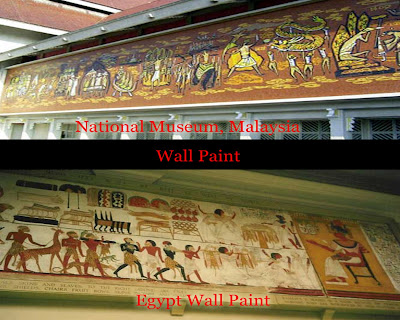 |
| National Stadium in Bukit Jalil |
The picture shown above is the National Stadium of Malaysia and below is the Panathenaic Stadium in Greence. The specialty of Panathenaic stadium is the ancient model of athletics tracks that looks much like a hairpin. National stadium of Malaysia added this hairpin element into it might because of during that time the designer of the stadium influenced by the art culture of Greek and also the effectiveness of the design. The purpose of added this element into the design might because of the capability of the design to occupied people is higher and it is standardized for the athletics design. In Greek, the Panathenaic stadium meaning ‘stadium of all the Athenians’ some people also call it Olympic stadium. Hence, Malaysia had made it because our National stadium is the best stadium in our country and the stadium is now used for a variety of events, and it also being one of the venues for the AFC Asian Cup.
 |
| National Museum of Malaysia |
The picture shown above is the National Museum of Malaysia. The mural of the building is chronologically documents the significant events of Malay history, including the eminent Malacca Malay Sultanate, colonization and the independence of Malaysia in 1957. In Egypt art culture, they like to paint their historical event or activities on the wall in horizontal way to show a flow of the process. National museum’s concept is similar with the Egypt culture which painted the historical activities on the wall. The purpose of applying this element into the design because by doing this we able to express or show our culture to the public more effectively.
 |
| Shah Alam Arch |
The picture shown above is the arch of Shah Alam. The arch has been found during Mesopotamia period, and roman often use it in their architecture design and arch is a curved structure that is usually made of stone, brick, concrete, or more. The arch also could symbolize an entrance to a place or boarder of a certain area. The purpose they build arch is also to support small structures, such as storerooms, and people often used columns to support the roof. This design limited the size and scope of a building. As a result, builders could not construct extremely large palaces or government building.As can be seen in the picture below, the shape is likely to be the same.


Looks interesting, ill be sure to check it out. Property in Egypt
ReplyDelete